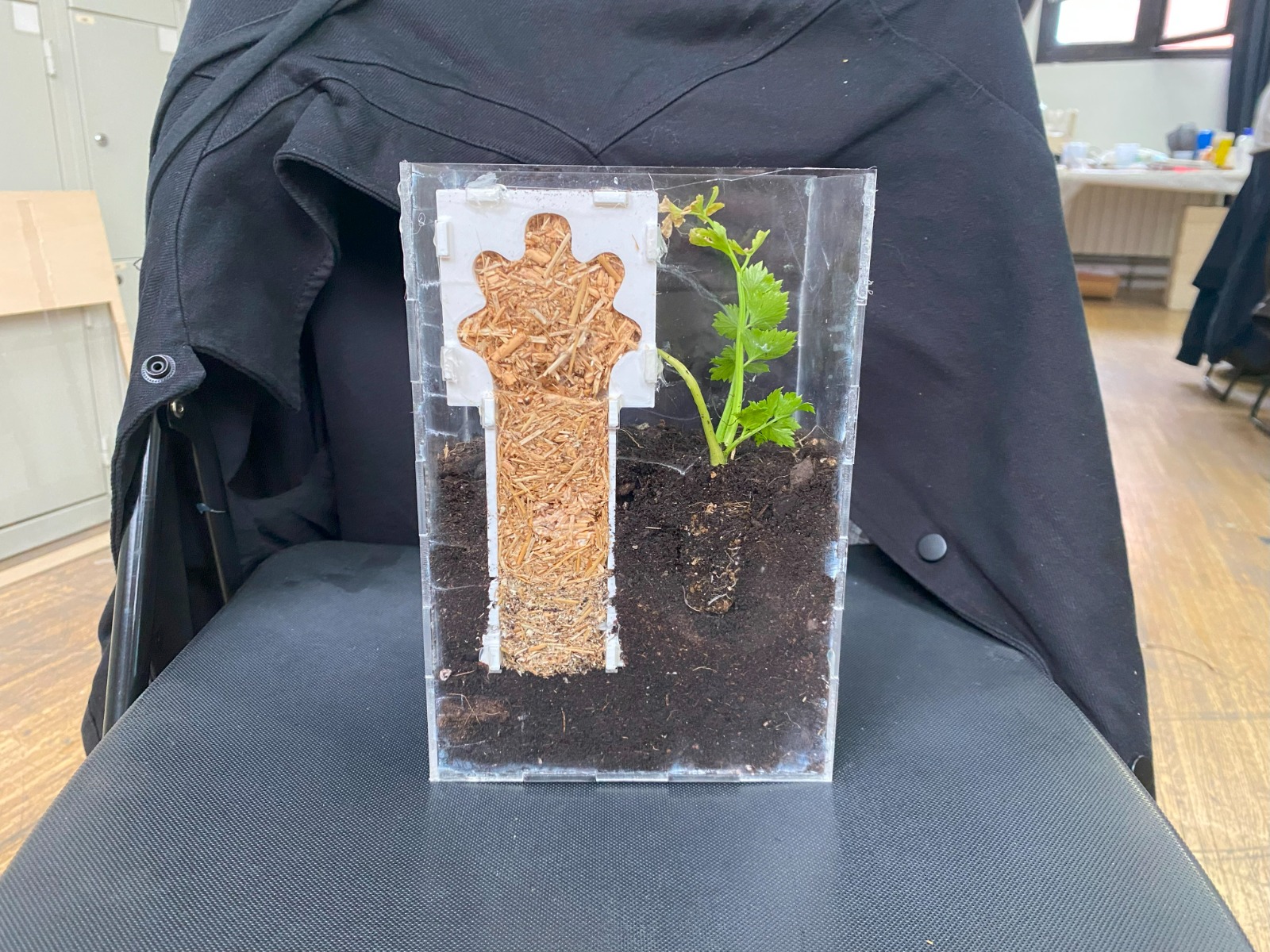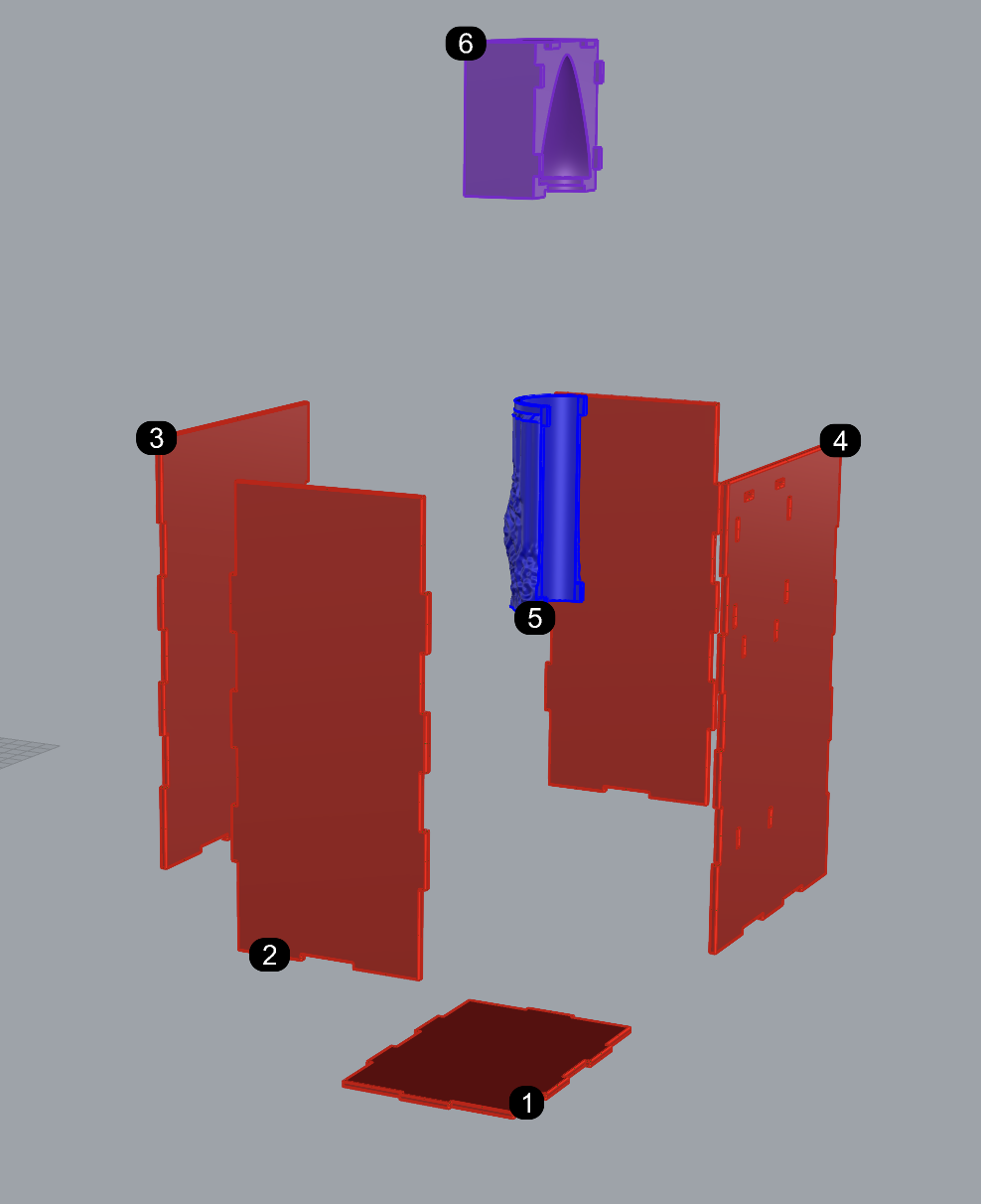Second Intervention 🪴
05/02/2024 - 12/02/2024
After the past intervention it was time to get started with the second one. For this one, prototyping would be key. Using the Micro-Challenge to make different prototypes useful for interventions.
How I get started?
I've been pretty lost during this term on how to approach my different areas of interest and join them together. Both democratization of tech and human/non-human connection have relations that I still haven't seen. For this reason it was great that I joined with Ever for the microchallenge as he had similar interests to mine and had a clear idea of what he wanted to try prototype. After speaking with him, I decided to prototype with him his idea for the micro-challenge and observe and speculate over the results. This way, I believed more ideas could pop-up to me. Learning from other people work.


The challenge
Ever, conceptualized about the connection between mycelium and the soil, proposing a new method to connect with soil, exchanging things. His idea, consisted on creating a series of clay connections, buried in the soil and put on the top a kind of mold or piece where mushrooms or mycelium can grow. Once you start cultivating the mycelium and filling the mold, the roots (mycorhizea) will grow through the connections and get to the ground. Once the mold is filled people will be able to take it and get either the piece or the mushrooms and leave the root's network, so plants around the area will be able to get nutrients and humans will make an exchange, taking the geometry and leaving the network.
As the idea was super speculative we designed an acrylic box system, similar to an ant farm with the mold an the connection cutted in half so once the mycelium is in we would be able to see if it grows naturally and how much it will take.
What do I take from the challenge
As I delved into Ever's idea, I found myself immediately captivated because it resonated with all the subjects of interest. Collaborating with him was rewarding on a personal project developement level. However, as I mulled over the concept and its potential iterations, a realization struck me. I often advocate for democratizing and empowering users, but I came to understand that true democratization extends beyond access to tools; it encompasses the democratization of knowledge needed to utilize those tools effectively. While the idea of molds applied in the concept is intriguing, it dawned on me that not everyone who might be interested in adopting this manufacturing system, should it prove successful, would possess the necessary skills. This realization underscored the importance of ensuring inclusivity and accessibility in the development process, making it imperative to bridge the gap between innovative ideas and practical execution for all potential users.

Reflection on the intervention: Next steps
A natural next step focusing on the upcoming micro-challenge will be to think in different ways biofabrication techniques can be democratized without forgetting that everyone should be able to use it. All of this without getting stucked into a blackbox dilema, where the user doesn't know what's going on during the fabrication processes. It will be great to think what kind of prototypes can help me research around this concept. Maybe a code where every user with an stl file can make their own molds automaticlly??? New ways of monitoring biofabrication techniques for users who don't have a scientific base of knowledge?